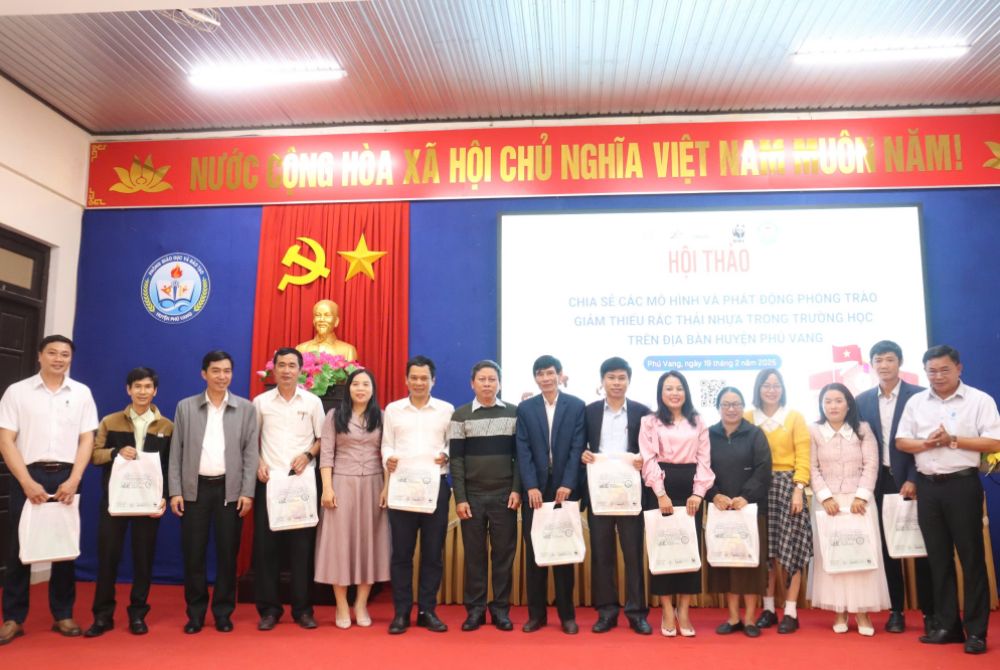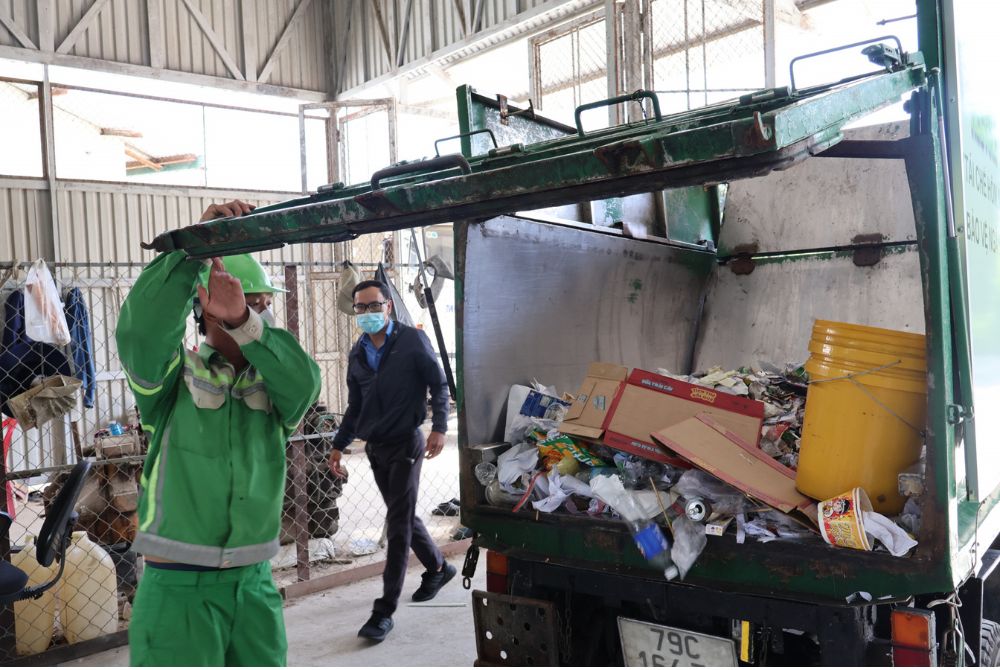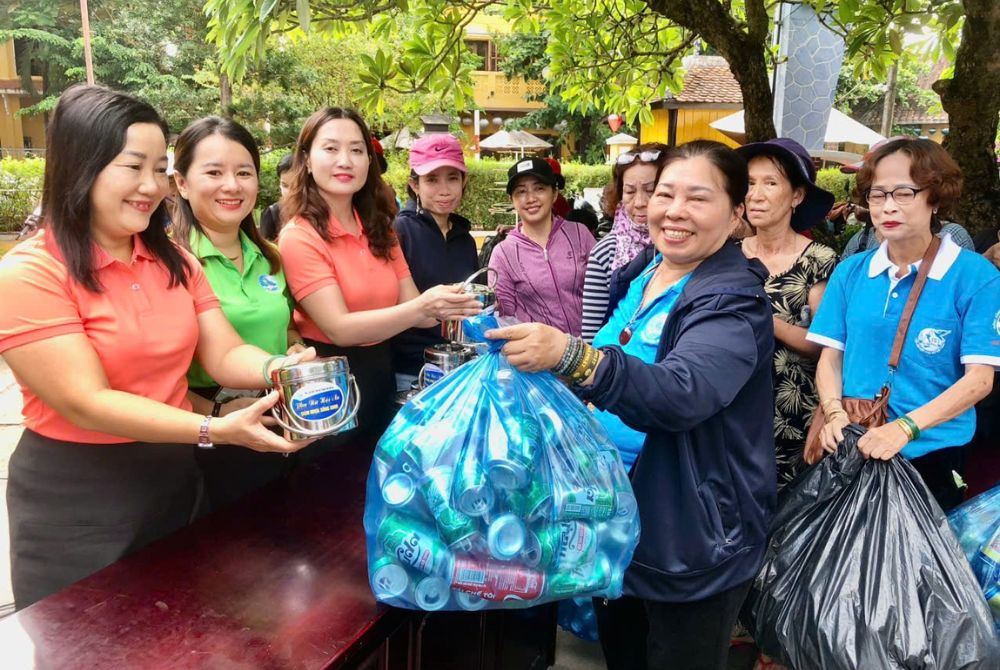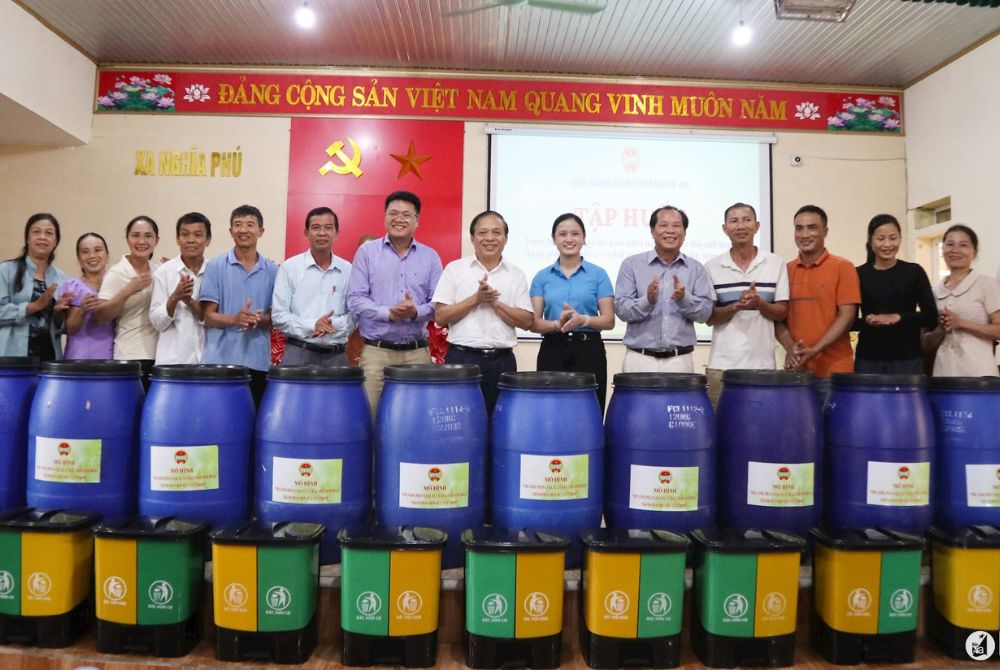Thua Thien Hue Province Implements Waste Sorting at Source, Heading Towards a Plastic-Reduced City
Waste sorting at source serves as the foundation for developing modern, low-emission waste treatment technologies. The construction and operation of the Phu Son Waste-to-Energy Plant is a high-tech solution aimed at reducing pollution and utilizing waste to generate electricity in Thua Thien Hue Province.
Challenges in household solid waste management
According to statistics, before 2024, Thua Thien Hue Province generated approximately 600 tons of household waste daily. The primary treatment method was landfill, with the Thuy Phuong landfill receiving up to 500 tons per day from Hue City, Huong Thuy and Huong Tra communes, Phu Vang and Phu Loc district. The remaining districts also had their own landfills for waste disposal.
However, the Thuy Phuong landfill has become increasingly overloaded, posing significant environmental and waste management challenges. In response, the Thua Thien Hue Provincial People’s Committee has introduced new strategies to reduce landfill dependance, notably by attracting investment in modern waste treatment technologies.
Phu Son Waste-to-Energy Plant - A Breakthrough in Waste Treatment
To address the issue of sustainable waste management, Mr. Nguyen Hoang Phuoc, Head of the Environmental Protection Branch of Thua Thien Hue Province, stated that the province has called for investment and selected a unit to implement the Phu Son Waste-to-Energy Plant project. The plant utilizes waste incineration technology with an input capacity of 600 tons/day, of which 500 tons are incinerated to generate between 7.5MW and 12MW of electricity. The plant officially commenced operations in 2024.

The Phu Son Waste-to-Energy Plant (photo: Vnexpress)
The primary technology applied is a moving grate incinerator - a stepped mechanical system with a tilting grate, optimizing the combustion process and minimizing residual ash. The plant’s waste storage pit has a capacity of 17.492m³, capable of storing waste for 12 days to regulate input waste volume and ensure operational efficiency.
The investment and commissioning of the Phu Son Waste-to-Energy Plant mark a significant shift in household solid waste treatment technology. This transition moves away from landfill-based methods, which fail to meet environmental protection standards in household solid waste treatment, towards environmentally friendly technologies, the best current available technology, that incorporate energy recovery, resource recycling and fuel production for other industries; Ultimately, the goal is to phase out direct landfill disposal of household solid waste.
Sorting waste at the source brings many benefits to the Phu Son waste-to-energy plant
To improve the efficiency of household solid waste management in Thua Thien Hue province, representatives from the provincial Department of Natural Resources and Environment believe that strengthening waste sorting at source will reduce the volume of waste that needs to be processed, prevents excessive waste accumulation and ensure that, with the fixed capacity of the waste-to-energy plant, waste can be managed over a longer period without overloading the facility as population growth, urbanization, and economic and industrial activities continue to increase waste volume.
Mr. Dang Phuoc Binh - Deputy Director of Thua Thien Hue provincial Department of Natural Resources and Environment, stated that waste sorting at the source allows for the recovery and reuse of recyclable materials for other production processes, reducing the need for incineration when separated collection is possible. This will promote the recycling industry and minimize the amount of waste that needs to be transported to treatment facilities.
“The 2020 Environmental Protection Law stipulates that the cost of collecting, transporting, and treating household solid waste is calculated based on the weight or volume of waste generated. Therefore, in the long run, source separation of waste, when this fee calculation method is applied, will help waste generators reduce expenses for collection, transportation, and treatment. Waste collection, transportation, and treatment from households are partly covered by residents’ payments, with an additional portion subsidized by the local budget. Besides utilizing recyclable and reusable waste, source separation reduces the total volume requiring collection, transportation, and treatment, thereby lowering costs compared to not sorting waste at the source” Mr. Binh shared.
In particular, if waste separation is not implemented, the amount of waste will continue to increase, however, it is not possible to immediately invest in treatment facilities that meet modern scale and process requirements, as this is a time-consuming process, from selecting the appropriate technology to attracting investors with sufficient capability and substantial financial resources. For waste-to-energy technology, a minimum waste volume of 400 tons per day is required to ensure cost recovery and profitability, making it attractive for investors.
Also according to Mr. Dang Phuoc Binh, waste sorting at the source is a correct direction for managing household solid waste and is a long-term strategy that requires the involvement of the entire society. In the short term, the local people’s committees are strengthening efforts to raise public awareness about waste sorting at the source, especially in rural areas, urban households are encouraged to manage organic waste and food waste at home by converting into organic compost. This not only helps reduce the volume of waste that needs to be processed but also allows the use of the products from the self treatment process for other purposes.
Source: According to the Ministry of Natural Resources and Environment’s Portal, “Thua Thien Hue implements waste sorting at the source aiming for a plastic-reduced city”, published on February 21, 2025, available at the link: https://monre.gov.vn/moi-truong/thua-thien-hue-trien-khai--phan-loai-rac-tai-nguon-huong-den-do-thi-giam-nhua-17636.htm, accessed on February 28, 2025












